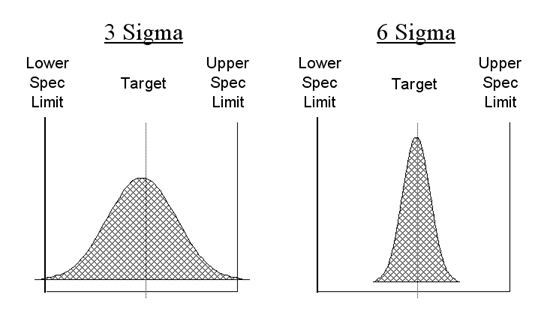Sigma is a statistical term that describes how much variability there is in a process. Higher sigma values indicate less variability. A sigma value of 6 means that the probability of producing a defect (or the process wandering out of spec) is about 3 out of a million opportunities. The diagram below shows an “approximation” of 3 sigma vs. 6 sigma variability.
Six Sigma uses a 5-step methodology to reduce the variability of processes and to solve problems — DMAIC
- Define
- Measure
- Analyze
- Improve
- Control
Six Sigma also uses a 5-step methodology to improve the design of products — DMADV
- Define
- Measure
- Analyze
- Design
- Verify
Many quality tools and techniques are typically used during a Six Sigma project, such as:
- Process Maps
- Cause and Effect Matrices
- Gauge R&R studies
- Capability Analysis
- Failure Modes & Effects Analysis (FMEA)
- Hypothesis Testing
- Design of Experiments (DOE)
- Mistake-Proofing
- Control Plans
